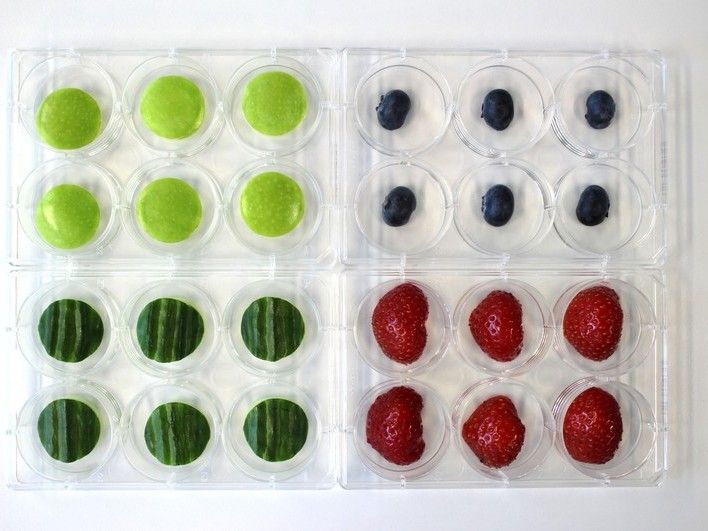New method for defence against noroviruses on fruit and vegetables
Advertisement
Noroviruses defy many resistances: They can withstand freezing temperatures down to
-150 °C and also longer baking processes at 200 °C. They can also survive outside their host for more than a week. The pathogens that occur worldwide are responsible for the majority of non-bacterial gastrointestinal infections in humans. It is estimated that between 20 and 40% of all Norovirus diseases are due to contaminated food, especially unprocessed or frozen fruit and vegetables. In 2018, the Robert Koch Institute (RKI) received 77,583 norovirus cases; 25 of these were fatal (only laboratory-confirmed diseases; actual case numbers are estimated to be significantly higher; source: Infection Epidemiological Yearbook for 2018 of the RKI).
Many questions remain unanswered regarding sources of contamination, detection methods and prevention measures; one of the most pressing is: how can companies producing and processing fruit and vegetables specifically inactivate noroviruses on their products?
A research team led by Prof. Dr. Barbara Becker at the Technical University of East Westphalia-Lippe in Lemgo has been working on an innovative way of decontaminating food: Within the framework of a project of the Industrielle Gemeinschaftsforschung (IGF), which is funded by the Forschungskreis der Ernährungsindustrie e.V. (FEI), the team investigated whether and to what extent noroviruses on contaminated fruit and vegetables can be inactivated by cold-fogged hydrogen peroxide (H2O2). A particular advantage of the antimicrobial agent, which is already used to sterilize surfaces, disinfect packaging and in washing baths, is that it breaks down quickly into water and oxygen. In its cold nebulization, an H2O2 solution is converted into very fine vapors (microaerosols) at room temperature by means of pressure through special nozzles without condensation.
"In order to find out whether we were able to reliably inactivate noroviruses on fruit and vegetables with cold-nebulized hydrogen peroxide, we used two different nebulization systems in which we treated apples, blueberries, cucumbers, strawberries and raspberries, i.e. products with different surface characteristics, that had previously been contaminated with murine norovirus (MNV) as a model virus," explained Prof. Barbara Becker. "We were able to show that the cold nebulization of hydrogen peroxide is very well suited to reliably inactivate noroviruses on fruit and vegetables with smooth surfaces," says the food microbiologist. Changes in sensory and nutrient content caused by the treatment could not be detected, and no residues of hydrogen peroxide were detected on the treated products.
The team around Prof. Barbara Becker was able to prove for the first time the high effectiveness of the H2O2 cold nebulisation: Many fruit and vegetable producers, traders and processing companies - also in the catering trade - will thus be able to benefit from this innovative process. However, before the process can be used widely, even higher inactivation rates must be achieved even on products with rough surfaces. In a follow-up project in cooperation with the University of Leipzig, for example, it will be investigated whether noroviruses can be reliably inactivated on soft fruit by a combined application of selected chemical and physical methods. A project for which there is a high demand: In 2017 alone, over 151,000 tonnes of strawberries, raspberries and blueberries were produced and processed in Germany and 137,000 tonnes were imported from worldwide production.

Apples, cucumbers, blueberries and strawberries contaminated with noroviruses in an experimental setup on multiwell plates.
Technische Hochschule Ostwestfalen-Lippe
Note: This article has been translated using a computer system without human intervention. LUMITOS offers these automatic translations to present a wider range of current news. Since this article has been translated with automatic translation, it is possible that it contains errors in vocabulary, syntax or grammar. The original article in German can be found here.




























































